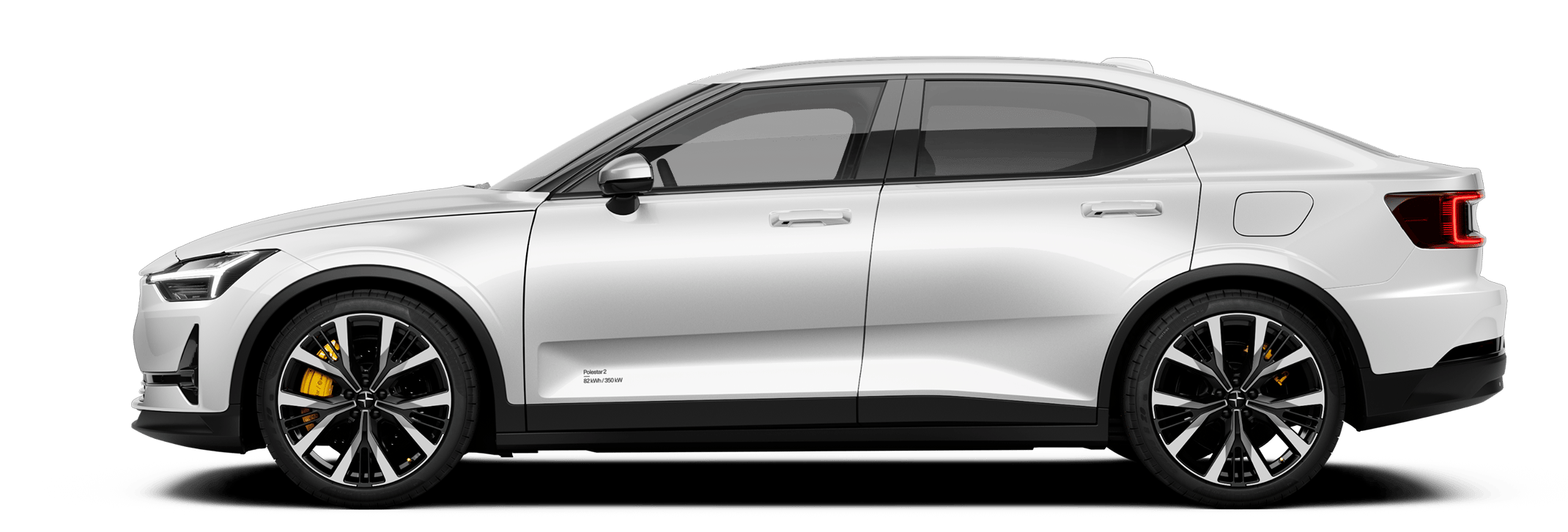Safety
Sharing expertise with Volvo Cars, Polestar 3 is built on almost 100 years of ground-breaking safety development. Designed with the latest structural innovations and advanced driver assistance systems (ADAS), it’s at the forefront of protective and preventive technology.

SmartZone™
As Polestar 3 doesn’t need a grille, it’s replaced by the SmartZone, containing cameras, sensors, and a heated radar. It enables the car to detect other road users and potentially hazardous situations that may go unseen by the human eye, even in all weather and visibility conditions.
Interior radars and cameras
Two infrared cameras track the driver’s eyes, and four motion-sensing radars monitor the car’s interior. The cameras can detect signs of fatigue or drowsiness, even through glasses. The radars help ensure that no children or pets are left in the car unintentionally. Both features work without storing information.


Occupant Detection System
When leaving the car, four motion-sensing radars scan the cabin. The tiniest movement stops the doors from locking and triggers a warning that a child or pet may still be inside. If this is intentional, Polestar 3 can be locked while the climate system stays active.
Intelligent lighting
Providing optimal illumination in any situation, the adaptive lighting technology of Polestar 3 enhances the level of safety and the driving experience.
1.3 megapixel HD LED
These optional headlights automatically adapt their intensity, spread, and beam level to the car’s surroundings via 1.3 million tiny adjustable mirrors. The mirror modules shade out oncoming vehicles, focusing the beam on darker road parts to reduce glare.
Available as an upgrade.
Active High Beam
The advanced Active High Beam system detects both oncoming traffic and cars in front of Polestar 3, automatically switching to low beam to avoid blinding other drivers.
Rear light warning sequence
Polestar 3 actively works towards improving the safety of all drivers. If the brake pedal is depressed very quickly, the onboard systems sense a possible emergency and the rear lights automatically flash a warning sequence.
Driver assistance
Polestar 3’s advanced driver assistant system (ADAS) adds an extra layer of security without compromising the authentic driving experience.
Pilot Assist
Pilot Assist detects if Polestar 3 moves too close to the lane markings. It works at speeds up to 150 km/h (where permitted) and keeps the car centred in the driving lane with gentle steering adjustments when necessary.
Available as an upgrade.

Adaptive Cruise Control
With the same cameras and radars utilised for Pilot Assist, Adaptive Cruise Control adjusts Polestar 3’s speed to the pace of traffic. It continuously monitors the vehicle in front to maintain a safe distance, and it works at speeds up to 180km/h, where legally permitted.
Lane change assist
Extending the functionality of Pilot Assist, Lane change assist allows Polestar 3 to guide itself into the adjacent driving lane. All the driver has to do is move the indicator stalk fully up or down, and the car will only proceed if the system’s camera and radars indicate it’s safe.
Road Sign Information
A car that sees the signs. Even when the driver doesn’t. The Road Sign Information system detects and displays speed limit and other road signs in the instrument panel.
Lane Keeping Aid
If Lane Keeping Aid senses that the car is about to cross a lane marking without using the indicators, it gently steers the car back into its lane. If this fails to correct the issue, it alerts the driver by vibrating the steering wheel.
Run-off Road Mitigation
Keep the rubber on the road. If Polestar 3 strays towards the road shoulder, Run-off Road Mitigation helps steer the car back. If the car still manages to leave the road surface, it applies the brakes and prepares the seat belts for potential impact.
Parking assistance
Polestar 3 uses cameras and ultrasonic sensors to help navigate parking spaces. Its wide-angle parking cameras also make it easier to manoeuvre in narrow streets and around sharp corners. The car warns the driver of potential hazards and takes preventative action when needed.
360° camera with 3D view
When manoeuvring at low speeds, Polestar 3 shows a bird’s-eye view of its surroundings. Park Assist uses 360° ultrasonic sensors and wide-angle cameras to measure the distance to obstacles at the front and rear of the car, and warns the driver visually and audibly to avoid collisions.
Available as an upgrade.
Cross Traffic Alert with auto-brake
When reversing out of a parked position, Polestar 3’s rear radars scan for approaching cars, cyclists, and pedestrians. Following visible and audible warnings, the auto-brake engages to stop the vehicle if there is a risk of a collision.
Preventive safety
With its array of sensory equipment, Polestar 3 continuously assesses its surroundings and driver behaviour, ready to warn and intervene to prevent accidents.
Forward collision avoidance
Polestar 3 monitors the surrounding environment using an array of advanced sensor technology, warning the driver when it detects pedestrians, cyclists, or traffic anomalies at intersections. The car brakes automatically if the driver doesn’t to avoid or mitigate the potential impact.

Driver Monitoring System
Without storing or sharing any images, the Driver Monitoring System tracks the driver’s eyelids, gaze, and head movement to identify any signs of distraction or fatigue. It issues audible and visible warnings as needed, ready to start an emergency stop procedure if strongly ignored.
Blind Spot Information System
If a vehicle is about to pass Polestar 3, the Blind Spot Information System alerts the driver with a warning light integrated in the frameless mirrors. If the system senses that the driver intends to switch lanes, the steer assist function guides Polestar 3 back into its lane.
Exit assist
Polestar 3 warns against exiting when objects such as pedestrians, bicycles, and other vehicles approach from the rear. An LED indicator will blink on the frameless mirror closest to the detected motion, and an audible warning is made if any doors are opened.
Post-impact protection
A well-designed body structure is crucial when it comes to safety. Polestar 3’s passenger compartment is equipped with 9 airbags, and constructed using ultra-high strength steel. The car’s front and rear crumple zones use a mix of materials to absorb and dissipate energy, protecting occupants in impact situations.

Post-impact braking
Post-impact braking reduces the risk of serious injury or damage to the vehicle, as well as the severity of a potential secondary collision. When the airbags and the seatbelt pretensioners are deployed on impact, the on-board sensors signal the the car to brake to a controlled standstill, reducing the after-effects of the impact.

Direct assistance
Two buttons on the overhead console make direct calls in case of a breakdown or an accident. The Connect button reaches Polestar Assistance for events like a flat battery or a puncture. The SOS button is intended for emergency situations such as accidents. In case of a severe accident, Polestar 3 automatically calls for help.
More about Polestar 3
- Visuals are for illustrative purposes only.



















